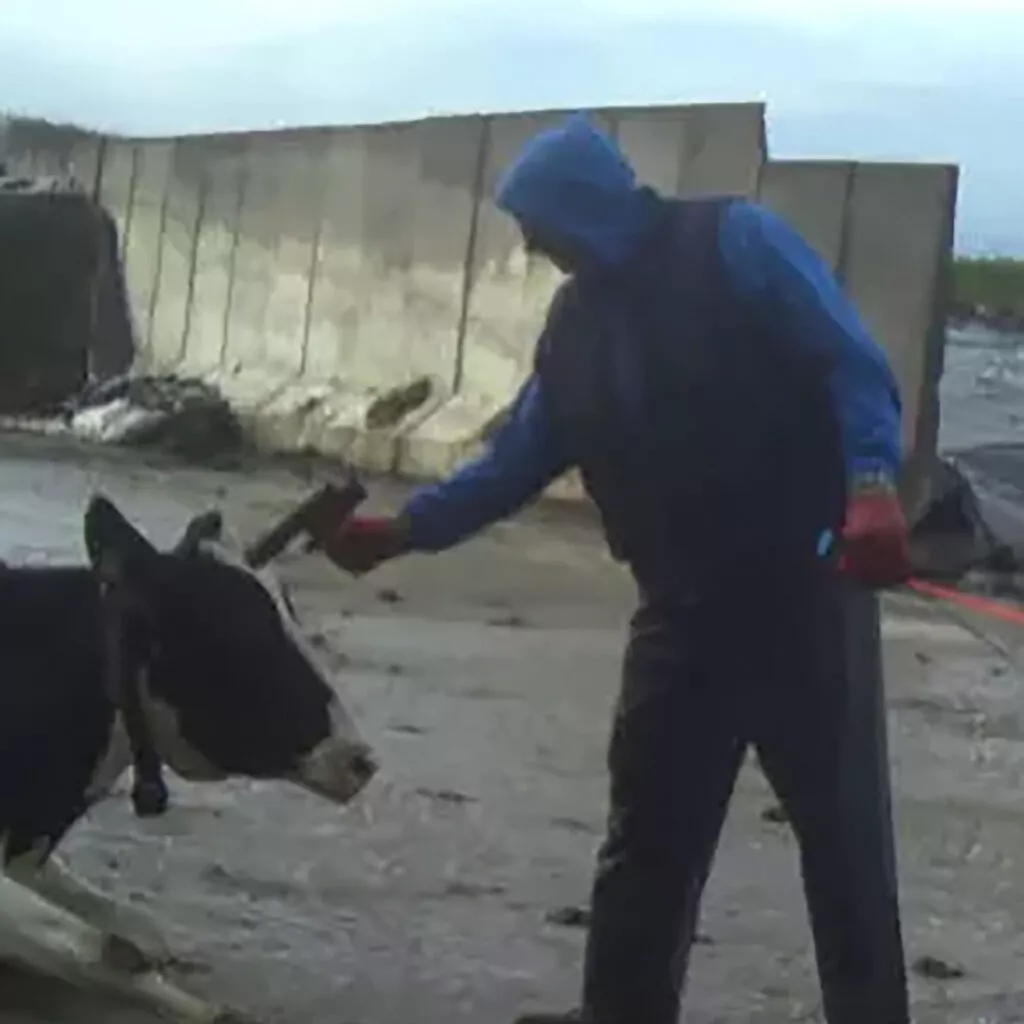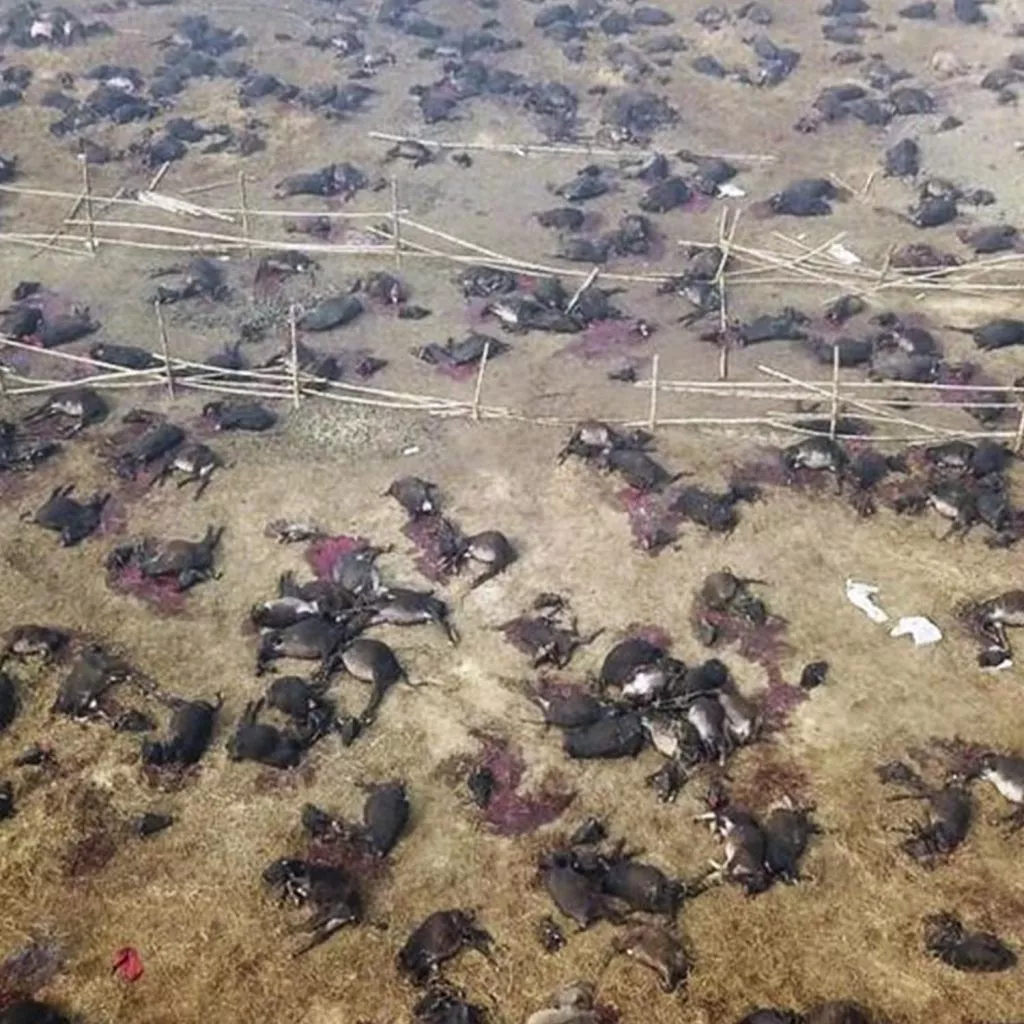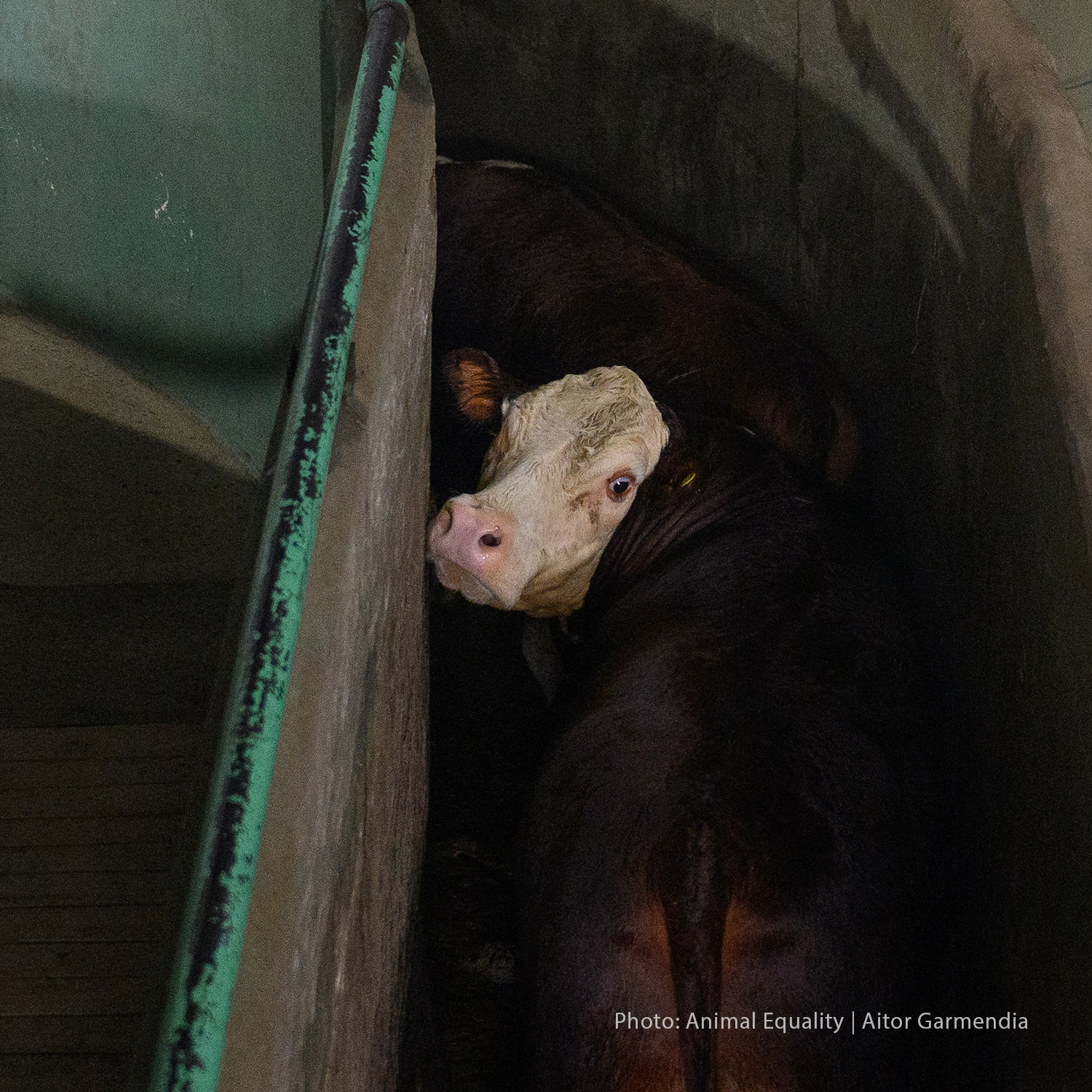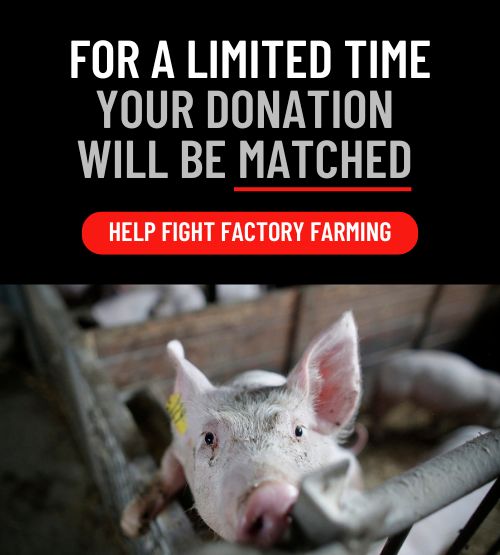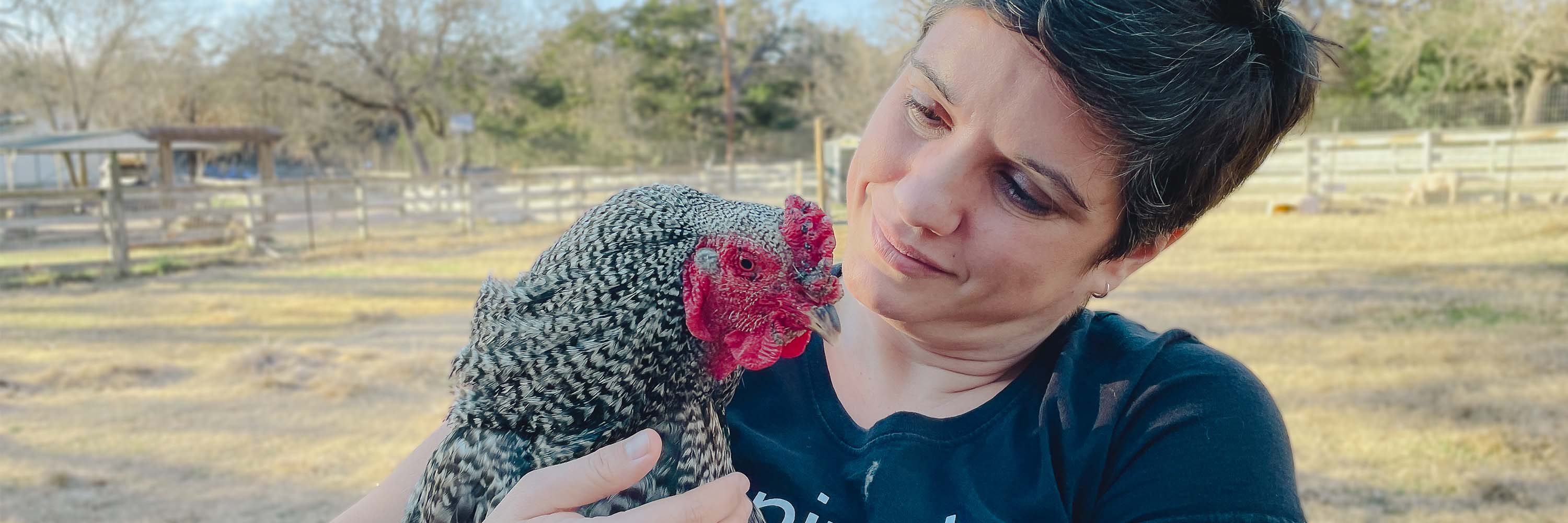

Finding Hope While Fighting: “We Are One Movement Making History”
In October of 2022, Animal Equality’s President & Co-founder, Sharon Núñez joined fellow advocates at the AVA—Animal & Vegan Advocacy—Summit in Washington DC.
This conference series was created to inspire animal advocates and provide them with opportunities for learning and networking so we can work together to create a world without animals in our food system.
Sharon was asked to speak at the Summit for a session titled “Finding Hope While Fighting for Farmed Animals.”
LISTEN TO HER SPEECH:
Video Transcript – Sharon AVA Summit
Michael Webermann, AVA Summit: First you are going to hear in today’s “Finding Hope While Fighting for Farmed Animals” session from Sharon Núñez, the Co-founder and President of Animal Equality, which, as I’m sure you all know, is an international organization working with society, governments and companies to end cruelty to farmed animals.
Sharon oversees the work the organization does in eight countries, providing leadership and support. Their work has been featured in some of the most important media outlets across the world, which we have all seen many times. Of course, including, The New York Times,
CNN, BBC, The Sunday Times, among others.
And they’ve been often selected as one of the most effective animal protection organizations around.
Please give it up for one of my friends and heroes, Sharon Núñez.
Sharon Núñez, Animal Equality: Thank you, Michael.
Hi, everyone. Can you hear me?
Well, first I want to thank the organizers of this wonderful conference. As Michael knows, I had my doubts, but it is wonderful and it has lived up to all of the expectations I had.
So I want to thank Michael, Julia, and Amanda for putting together such an incredible conference. Thank you so much.
I also want to warn that some of the images that we’re going to see are a little bit harsh. But as I like to say, we’re activists. Yeah, we’re activists. We’re strong and we’re courageous.
So where do I find the strength to fight for animals?
In other activists. Their courage and stories…They speak to us directly. They remind us what our movement calls for. They remind us what we signed up for. They remind us what we can achieve.
From the women who started the movement against vivisection in the UK, to the Hunt Saboteurs. Heroes that have been putting themselves between the loaded rifles of hunters and animals for the last 50 years.
To one that is very touching to me—activist Jill Phipps, a mother crushed to death under the wheels of a truck for protesting against the transport of other mother’s babies. Baby calves.
To Gene Baur, carrying out some of the first investigations inside stockyards and slaughterhouses in the US to create the Farm Sanctuary movement.
To Anita Krajnc. For bringing water to animals who needed it. I want to give it up for Anita and for Gene, and for many of those who are here today.
To the most recent Smithfield case, which you have all heard about, where two activists were acquitted on all charges after being prosecuted for rescuing two baby piglets.
We share a mission. We are one movement making history.
I’m Sharon Núñez. I’m Animal Equality’s President and Co-founder.
But you know what? That doesn’t matter.
I am an activist.
I became an activist to end the suffering of animals.
And it was the stories of other activists and the belief that no fight was more important than animal rights.
Then in 2002, I decided I would dedicate my life to animals. This is me in a farm. I have the pleasure to be joined by actress Rooney Mara to show the conditions of chickens and farms in the UK. For that, I have faced great obstacles.
I have seen animals I couldn’t save, beg with their eyes to be helped, in the more than 51 farms I have visited.
I have been arrested…my family threatened…for simply holding up a camera to animal abuse. In this photo you can see here, I’m leaving jail after five nights in a dark cell and after being called an eco-terrorist with 11 other Spanish activists in the media.
Through it all, I find strength in those of you who came before me and those of you who are part of this history-making movement today.
Today, I’m going to share with you three of the most inspiring stories that keep me being an activist: Henry Spira, Dulce Ramírez and Sean Thomas.
“I remember my first dream was to liberate all birds from cages”, said Henry Spira in 1995.
He was an activist his entire life. But it was reading and attending a course by Peter Singer that he decided that he would focus on animals, specifically vivisection.
According to him, after a century of the anti-vivisection movement in the United States and in the UK having not too much of an impact on animal experiments, it was time to ask himself one question: “What can I do about it?”
I present to you the movement’s first great strategist, Henry Spira.
Some thought it unreasonable to try to end specific animal experiments. Henry focused on one thing: winning.
He learned as much as he could, and he discovered that the American Museum of Natural History…sorry for the images…was drilling holes into the brains of cats to conduct sex research experiments. Experiments were funded by public tax money. And they’d been doing these experiments for 20 years.
To ensure the campaign would gain public support, Henry explained the experiments to people who had no relation with the animal rights issue. They were shocked like for all of us here.
For Henry, it did not make a difference if the experiments were being carried out on a cat,
a rat or a hamster. But he knew he needed an animal that most people would support.
He had found an issue that few people would be against, funded by public tax money. He described the campaign brilliantly: “Do you want your tax money to be spent on mutilating cats to see how they perform sexually?”
Henry Spira was focused on winning. Therefore, he reached out to the museum and asked them to end the experiments. There was no need for a campaign or a protest. Why carry it out? He received no response.
He had a vision. But he was also a great strategist. It was time to campaign. He wrote articles, including in the New York Times. He conducted protests. When the museum said it would arrest anyone who entered the museum with signs, the protesters wore T-shirts.
Henry Spira used a series of novel strategies that are part of Animal Equality and part of our movement today. He encouraged corporations to stop funding the museum until they ended the experiments. Just like today, we reach out to company affiliates to ask them to stop supporting animal abuse when we campaign.
This is Animal Equality’s Compass campaign, where we’re reaching out to Bank of America to ask them to drop Compass, as they’re using gestation crates. There’s a little difference. Henry did it 40 years earlier.
Henry was a master of conducting tactics. After 121 members of Congress got involved and expressed their opposition to the experiments, the founders of the museum had to pull out.
It was the protests. It was reaching out to the affiliates. It was reaching out to Congress people. The experiments ended. It was the movement’s, in my opinion, first great win.
Once you know, he said, once they know you’re not just looking to campaign…You’re not just looking to make noise…What are you looking to? You’re looking to win.
He then moved on to even more unreasonable targets. Henry was called unreasonable his entire life.
Revlon. He won. Revlon soon committed to funding the end of animal experiments.
Avon. He won. He bought a single piece of stock, and that managed to give him access to a Procter and Gamble shareholders meeting and ask a question. Soon after, Procter and Gamble were telling him what they were doing to end experiments.
There’s one person, Henry Spira. One person.
In 1995, Henry decided to focus on farmed animals. In my opinion, the animals that needed the most.
He spent his last years of life battling cancer and focused to improve the lives of these animals.
He managed to get face branding banned in cows being transported from Mexico. And McDonald’s, for the first time, to strengthen their animal welfare policies.
Henry Spira is an absolute hero of mine. I read his book many times. I’ve watched his documentary. I always find inspiration.
And he reaches out to us today. He asks us to refuse to give up. He asks us to believe that the fight is worth it. He asks us to please focus on results. Focus on what you can achieve, even if you’re just one person. But most importantly, he asks us to be unreasonable.
After having banned circuses with animals in Jalisco, Dulce knew it was time to fight for animals killed for meat. She armed herself with a camera and decided to film how bad the situation was in her state of Jalisco, the largest meat-producing state in the country.
Dulce visited 36 farms and a slaughterhouse. She documented a newborn calf yelling for her mother minutes after being separated from her. Dulce also documented this…and this.
After three days of filming in slaughterhouses throughout Jalisco, no rest, with Animal Equality’s
Co-founder, Jose Valle, they spent a night before Christmas standing on a pool of blood.
They were documenting the largest killing of all: La matanza de Navidad. “The Christmas killing.”
Doing investigations in Mexico is very, very, very risky. But that didn’t stop Dulce.
Once, she was stopped by the narcos and told to turn around or…That didn’t deter Dulce, and it didn’t deter another hero, Ari Nessel, who joined Animal Equality as part of our investigations in Mexico.
Dulce used all of this pain and all of this suffering. And it did not make her weaker. No, it didn’t. I work with her every day. It made her stronger.
She built a team. She lobbied politicians. She was interviewed by the most famous journalists. She conducted protests. One politician she spoke to was so deeply moved by what Dulce had done and Dulce had showed him, that he also decided it was time to do something.
His name was Salvador Caro. Salvador took the images that Dulce had filmed to the Congress of Jalisco…the largest meat-producing state in the country…and in a large screen confronted
Congresspeople about the cruelty happening in their state. They were shocked.
All of these footage were taken by our activists in Mexico. They were all real. Everything that happened.
Change was not only necessary, it was inevitable. It only took four months after viewing these footage for an initiative to be introduced in the state where Dulce had raised her hand to film animal cruelty, for months, for days, standing on pools of blood. 90% of Congresspeople in Jalisco voted to end cruelty.
For the first time in the state, animals had basic protections. Stunning was made mandatory and considered a crime if animals weren’t stunned. And extreme cruelty like beating animals
and kicking them became a crime. It protected 200 million animals from extreme abuse.
Next was the state of Hidalgo. This is Dulce and her team. A similar protest…a similar way of working resulted in the first ever chapter in Mexican state law to protect farmed animals. It includes a ban on starving hens to get them to lay more eggs, which is common practice within the egg industry.
It bans mutilations without veterinary supervision. It stops animals from witnessing other animals from being killed in slaughterhouses. It makes stunning mandatory and it includes cameras to monitor slaughterhouses.
Dulce won’t stop until all Mexican states protect animals. Her next effort is to change the Mexican Constitution to get animals recognized as sentient beings in Mexico. As well as to get millions of Mexicans to switch to plant-based eating, with more…with over a million
subscribers to our Love Veg program in Mexico.
This is Mexico before the arrival of the welfare and Animal Equality. Almost no investigations, no laws for farmed animals, no basic protections. Little information about plant-based eating.
This is Mexico today. The colors of change affect 500 million animals. Dulce remind us that we have agency in all situations. We have agency. That’s our freedom. We can choose. If we find courage…and courage, which, you know, we all feel fear. Courage is not the absence of fear. Courage is to move forward regardless of our fear. And her courage changed an entire country.
Be the person whose courage makes majority. And in this room today, we have Dulce Ramírez, who is there. We love you, Dulce!
There is more. There is more. There is more.
It was September 2007 when Sean Thomas walked into the Hallmark slaughterhouse in Chino County, California, as part of an investigation with the Humane Society of the United States. This slaughterhouse would be his life for the next two months.
What he would film would shock the country and show how farmed animal cruelty is
viewed in the US. Exhausted from years of cruelty, their babies taken away from them year after year, in farms in California, Arizona and Texas, dairy cows arrive at the Hallmark slaughterhouse after being driven for 12 hours across the country.
Their final destination. Perhaps the worst of all. On arrival, some have swollen feet, others limp. Some can’t stand up. To move them out of the truck and into the slaughterhouse, workers tie chains around their necks and pull. They use electric shocks on them to get them standing and moving.
On this occasion, a worker is so enraged, Sean told me…I met with him two weeks ago to get this story…He put a cow…He put a hose over a cow’s face and turned on the water. He did this for a minute and then she collapsed.
Sean Thomas also filmed how cows unable to move were slaughtered and processed for meat,
which goes against federal regulations. The meat from these cows was going to fast food chains and school lunch programs in California.
Children were eating the mutilated bodies of mother cows who had never been able to take
care or feed their own children.
After ending the investigation, Sean took the footage to the local sheriff. Feeling hopeless, the sheriff’s office did not think that they had the power to seek prosecution. Sean and the HSUS lawyers insisted they did. Finally, the sheriff’s office brought animal cruelty charges.
Sean and the HSUS, Sean ensured that such cruelty would not stay at a local level. He had documented that the slaughterhouse was slaughtering animals who could not move, which, as I said, goes against federal regulations. And that the meat was going into the food system.
When, in a room with USDA officials, they insisted it be a quiet process, the HSUS lawyers and Sean walked out. It was time for the investigation to go public.
After a huge media release, the USDA had to admit that the inspection process was inadequate. It resulted in federal hearings. So happy about this: The first time in US’s history for farmed animals that a case reached Congress.
Here is the owner of the slaughterhouse…the manager of the slaughterhouse testifying. When the owner of the slaughterhouse said “Well, I have not seen this footage,” a member of Congress told him, “Well, you must be the only person in the United States who has not seen it.”
There is more.
This investigation resulted in the largest meat recall in US history, with 143 million pounds of beef recalled. This case is taught in Animal Law universities today. It is historic and it paves the way for future investigations.
Those organizations, those of us who do investigations. The first time a slaughterhouse
was charged for animal cruelty, the first time farmed animal footage was shown in Congress, the first time an animal task force was created in Chino County, California. And the biggest media exposure for animal cruelty in the history of the United States.
Today, Sean continues with his mindset on uncovering the truth. Now, as Animal Equality’s
International Director of Investigations, he leads our investigations internationally and has been behind the release of dozens of investigations.
In December last year, under Sean’s leadership, an Animal Equality investigator filmed inside a hatchery belonging to Foster Farms, one of the largest chicken producers in the United States. This newborn is caught in the machinery. He will soon be discarded and get ground alive. This newborn, he is scalded alive after getting caught up in a tray and ending up in the washing machine at the hatchery.
It is difficult to get prosecution for animal cruelty, even with cases as shocking as this one. The sheriff’s office completely ignored us. Sean has worked with counsel to use any means necessary to pursue prosecution, and they have found a new way of seeking justice for these chicks where Animal Equality will be the plaintiff. We’re still working on it. Animal Equality is suing Foster Farms for animal cruelty.
Sean reminds us that we can’t look the other way…we can’t look the other way. We just can’t…we can’t. But our courage and determination can shine a light on animal cruelty and that we can show people the way. Show the world.
There are three things that these heroes—Henry Spira, Dulce Ramírez, Sean Thomas—have in common. Firstly, their legacy will continue beyond their lives. Their commitment, their undoubtedness, their courage, their focus on results will impact millions of animals for decades to come. They inspire us to go beyond our limitations. They inspire us to see obstacles as opportunities.
Secondly, they couldn’t be certain about change. They just didn’t know what would happen. Spira could not know if the American Museum of Natural History would stop the cruel experiments. Dulce wasn’t certain if the nights standing in pools of blood would end in legislative changes. And Sean couldn’t know if the time at the Hallmark slaughterhouse where he saw all of those cows abused and beaten would result in criminal charges or even a federal hearing.
But they took ownership of that which was in their control, showing up every day and trying their best for animals. And they became invincible. They became indomitable.
Thirdly, Henry, Dulce, and Sean are part of our movement, as are you. These stories are bigger than them. They’re your stories. But these stories are also bigger than you. These are the stories of the millions of animals that existed…exist today and will continue to exist tomorrow.
We stand with Spira and Dulce and Sean in a battle between a cruel past and a more compassionate future. There is few of us, few soldiers fighting this battle against unimaginable adversity and powerful enemies.
But they show us, and a lot of you in this room show us, that we can win. We can achieve. We can be unreasonable, like Spira. We can be courageous, like Dulce. And we can show the world
what they need to know, like Sean. Every day. It’s a daily decision. Wake up in the morning. We can make a choice.
Obstacle or opportunity.
Fear or courage.
And I ask you today: What will you choose?
Animals need us to answer.
The sooner the better.
Thank you so much.
If these stories inspired you to defend animals, one of the easiest choices you can make is to switch to a plant-based diet. It’s how you can show up every day for millions of animals being exploited for meat, dairy and eggs. It’s the ultimate compassionate decision that you can make today. Choose animals by choosing animal-free alternatives.
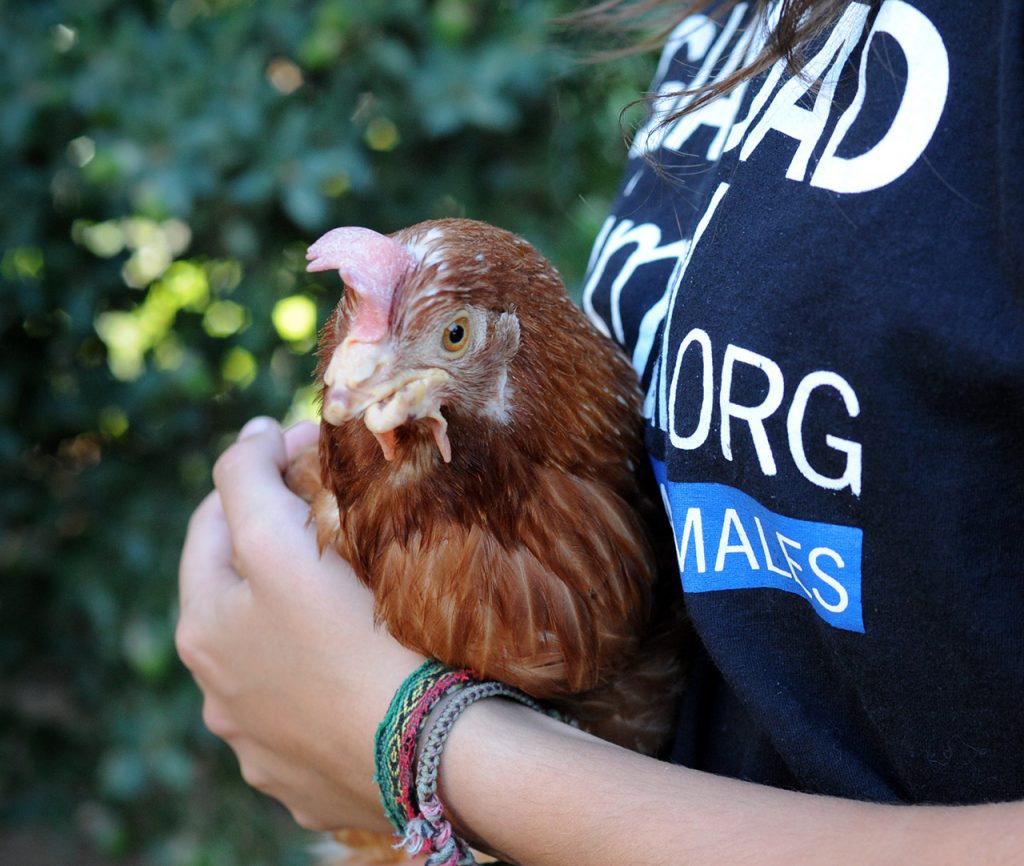
LIVE KINDLY
With rich emotional lives and unbreakable family bonds, farmed animals deserve to be protected.
You can build a kinder world by replacing animal food products with plant‑based ones.
Recommended
